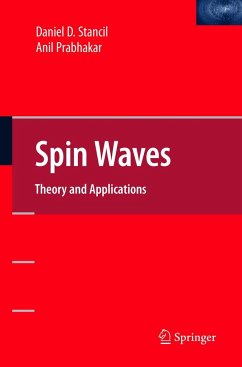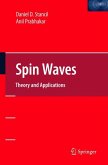Magnetic materials can support propagating waves of magnetization; since these are oscillations in the magnetostatic properties of the material, they are called magnetostatic waves (sometimes "magnons" or "magnetic polarons"). Under the proper circumstances these waves can exhibit, either dispersive or nondispersive, isotropic or anisotropic propagation, nonreciprocity, frequency-selective nonlinearities, soliton propagation, and chaotic behavior. This rich variety of behavior has led to a number of proposed applications in microwave and optical signal processing.
This book begins by introducing magnetism and discusses magnetic properties of materials, magnetic moments of atoms and ions, and the elements important to magnetism. It then goes on to cover magnetic susceptibilities, electromagnetic waves in anisotropic dispersive media, magnetostatic modes, and propagation characteristics and excitation of magnetostatic waves among other topics. There are problems at theend ofeach chapter, many of which serve to expand or explain the material in the text. The bibliographies for each chapter give an entry to the research literature. Spin Waves: Theory and Applications serves not only as an introduction to an active area of research, but also as a reference for workers in the field.
This book begins by introducing magnetism and discusses magnetic properties of materials, magnetic moments of atoms and ions, and the elements important to magnetism. It then goes on to cover magnetic susceptibilities, electromagnetic waves in anisotropic dispersive media, magnetostatic modes, and propagation characteristics and excitation of magnetostatic waves among other topics. There are problems at theend ofeach chapter, many of which serve to expand or explain the material in the text. The bibliographies for each chapter give an entry to the research literature. Spin Waves: Theory and Applications serves not only as an introduction to an active area of research, but also as a reference for workers in the field.








